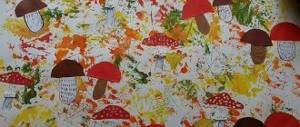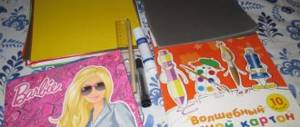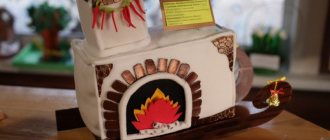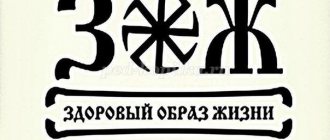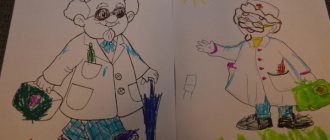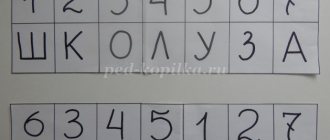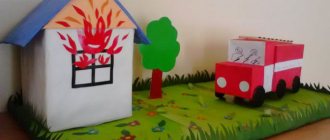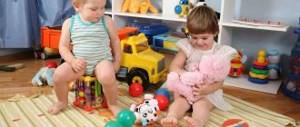A preparatory group for preschoolers is a great opportunity to instill in your child a love of creativity and the skills of basic techniques that will definitely be useful to him in labor lessons at school. Handicraft classes develop not only children's imagination, fantasy, but also fine motor skills, and also help the child to form a correct picture of the world around him. Let's look at several master classes and ideas for paper crafts on the theme of ships, which are perfect for craftsmen starting their creative path.
Making a boat using a template
This is one of the simplest options for making a panel applique, which a child can handle even in kindergarten. The essence of this craft is to cut out the details of the ship according to a pre-printed template, and then paste them onto the prepared background.
Needed for work
- Cardboard for background;
- Colored paper in the shades you want to see on the boat;
- Paper glue;
- Scissors.
To make this application yourself, just follow a simple diagram:
- We print out the details of the boat on a piece of paper (this can be done immediately on the back of sheets of colored paper) or transfer their outline from the computer screen onto the sheets and cut them out.
- Glue two waves onto the background.
- Now the main part of the boat and its mast.
- To give the picture a sense of volume, glue another wave on top of the base of the ship.
- We attach the sails and flag to the mast.
- The last step is to complement the composition with clouds and a flying bird.
You can also make three-dimensional versions of appliqués from simple geometric details. For example, creating a sail fluttering in the wind is very easy.
A beautiful way to make a paper boat applique.
Hello again, dear lovers of crafts and DIY paper appliqués! It is very useful to make crafts and applications with preschool children perseverance and accuracy . If the child suddenly fails to do something on his own, in this case, help him and praise him for his accuracy in completing the appliqué. Make sure that all the paper parts are glued evenly, the child will understand what the result of his work should look like and in the future the child will do all his work carefully. This master class is conducted with children in kindergartens and educational children's clubs. Next, several application options for children will be offered.
Option 1
In order to make the same beautiful colored paper craft, we will need a set of colored paper (you can buy it at any stationery store), scissors, a ruler and a pencil. Next, in four simple steps, we will tell you how to do this.
1 step. Transfer the boat template onto colored paper:
cloud (3 pieces) blue,
triangle (1 piece) yellow,
flag (1 piece) blue, semi-oval (1 piece) yellow,
narrow long rectangle (1 piece) red,
hexagon (deck 1 piece) blue,
long wave (3 pieces) blue, bird (1 piece) black.
You can always dream up with your child and change the colors of the parts, whatever the child wants is what you want and you can make it, color is not important in this craft, you can play with your imagination. Help your child draw (perhaps his first) wavy lines, a straight line along a ruler.
Step 2. - after you have transferred the template onto multi-colored paper, cut out all the necessary details, then we begin to glue 2 waves parallel to each other from the bottom of the paper. Attention! Leave a small distance between them for the third wave (we will glue it at the end).
Step 3. — glue the blue hexagon (deck) directly onto the top wave. Next, find the middle of the deck and glue a red narrow rectangle vertically.
Step 4 - glue the yellow triangle to the right of the red narrow rectangle. Then we glue the yellow semi-oval, but to the left of the same rectangle. At the very top of the red rectangle we glue a blue flag. After all this, at the end we glue the third wave between the first two, right on the blue deck.
The result was a colorful, beautiful, hand-made paper boat. Save this craft as a keepsake; it will be very interesting to review them later when the child grows up.
Making the applique “Boat and Steamship”
Schemes for creating an applique with a steamboat
Applications consisting of a large number of parts are suitable for making by children in the older group.
Step-by-step instructions on how to make a steamer applique with your own hands:
- First, we prepare the applique pieces by cutting them out from colored cardboard or paper. To do this, you can use stencils with different geometric shapes.
- For the base of the steamer, you need to cut a trapezoid. We fold the red blank in half and cut off a part from the edge at an angle. We unfold it - we get this figure.
- Next, glue a trapezoid onto the background and an orange rectangle above it.
- We cut the yellow rectangle into two parts and get two identical squares - these are the windows of the ship.
- The yellow rectangle at the very top is the steamer's chimney. We draw a bright stripe on it. At this stage you can add waves and seagulls.
- The last thing the ship lacks is portholes. We cut them out of light paper.
Children in the middle group can be asked to make an applique using a ready-made template. You don’t need detailed instructions for this, children just need to cut out the parts of the steamer, and then glue them step by step onto the background
Volumetric applique “Boat”
The idea with sailboats is interesting, and therefore it will be more interesting to make crafts. This technique is a little non-standard, since the sails will have to be made in volume. This can be done in several ways: glue the workpiece exclusively along the edge, tucking it in a little; or fold the sail in half, securing only one side. Using this technique, the applique looks more original.
In addition to the boat itself, you can make other components of the picture voluminous, for example, a cloud.
Three-dimensional applications will be made with great interest by kindergarten students in the senior group; for them this master class will not be difficult.
Older children can develop their own thinking and imagination, improvising with colors, geometric shapes and the number of parts and the boats themselves. For example, children in the preparatory group will do an excellent job with the applique “ships in the roads”. Below are the ideas for this work in a photo report.
We create an applique with a boat from cereals
Another fascinating tutorial is creating appliqués from cereals. You can use buckwheat, rice, millet and even semolina.
A step-by-step description of the process of creating a panel with a boat from cereals:
- We prepare the necessary materials: cardboard for the base, PVA glue, various cereals, as well as a drawing of a ship.
- Then the boat is transferred to the base with a simple pencil, and work begins on filling its contours with cereal.
- To begin with, a contour is laid out. The base is smeared with glue, grains are glued to it.
- Then the inside.
- The remains of semolina and other cereals are shaken into a bowl or carefully blown away.
Using the same principle, you can make a warship out of sand:
Stencils for applications with boats
Several ideas for boat applique
In this work, the triangular sail received a curved shape by twisting it with an ordinary pencil: And here the triangle was bent in half, and one half seemed to float freely in the sea wind: In this boat, a rectangular sail was used, glued in such a way as to create a bulge in the center: In addition This means that in the preparatory group, children can create boats using other techniques, for example, origami, and then create from them compositions with chaotic “ragged” waves:
And instead of colored paper or cardboard, you can use bright fabrics with unusual patterns, cutting out the same geometric details from them. Fabric appliques can be used not only to create panels, but also postcards, decorate clothes, pillows:
It is easy to interest children in the younger group with such an unusual game: each of the children independently makes an appliqué boat, and then all the works are combined together into one large panel.
Such a lesson will teach children to work in a team, and each of them will understand that they are responsible for the overall final result.
Schemes for working on the application “Boats float on the river” in the middle group
Let's look at three step-by-step explanations of how to perform the “Boats Float on the River” appliqué.
Option #1
For this application, the background is created by the teacher
This is a collective application. Children make paper boats on a white backing and then glue them onto the “river”.
Instructions:
- Making the base of the boat. “Guys, let’s do it like I do. Take a cherry-colored rectangle and cut off the corners on the long side.”
- Cut out the mast. “Now we cut the purple rectangle diagonally like I did.”
- Place the parts on the backing.
- Glue it.
- We place the substrates against a common background - a river drawn on several glued A4 sheets.
Option No. 2
Despite the fact that this mosaic applique is an individual work, the materials can be shared by 3-4 children
This is a mosaic application.
Instructions:
- The teacher gives the children sheets of blue paper (preferably thin cardboard) with the outlines of a boat drawn on them.
- “Guys, coat the base of the boat with glue and carefully sprinkle it with millet.”
- Repeat the previous step with the mast.
- Let the application dry.
Option #3
The base of this boat is made by the teacher, since it will be difficult for kids to cut out asymmetrical parts with a rounded shape
This work combines different types of paper: thin cardboard for the backing, crumpled paper for the river, colored paper for the boat and the sun, napkins for the clouds. But the teacher gives out all the details ready-made. Children will only position and glue correctly.
Instructions:
- “Guys, let’s glue the purple sea to the bottom of the sheet.”
- “Now we take the brown part and place it on the waves the way I do it. Glue it."
- “Now we glue the mast, moving it slightly to the left.” If children do not distinguish between left and right, then the teacher should show everyone.
- “We place the sun at the top.”
- We complete the composition with two clouds.
